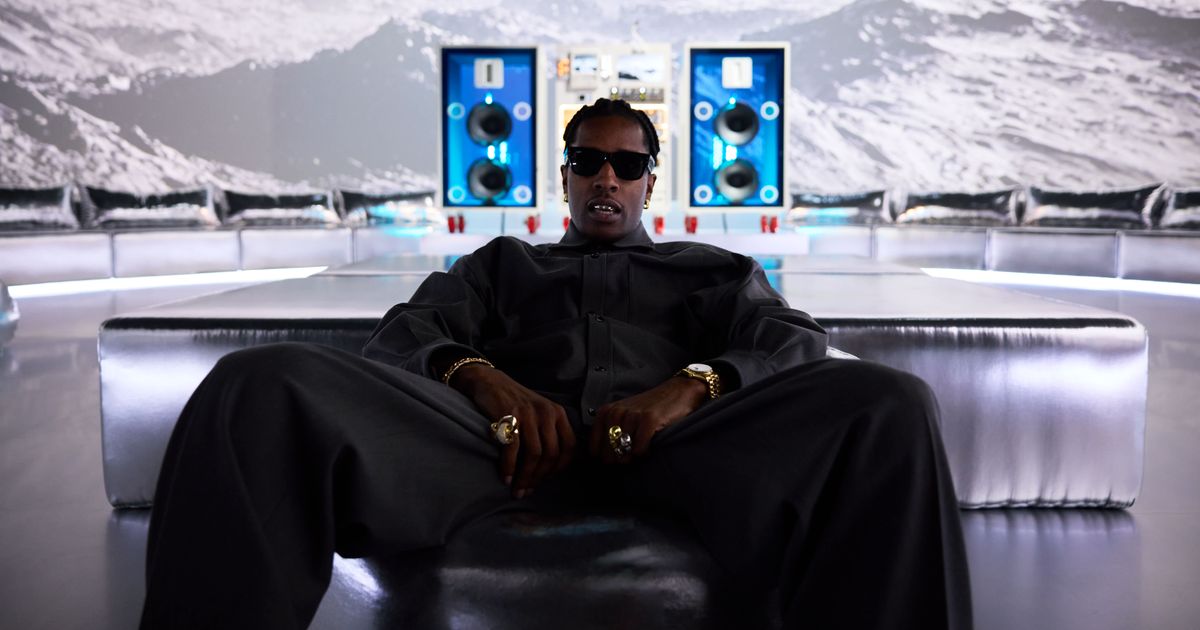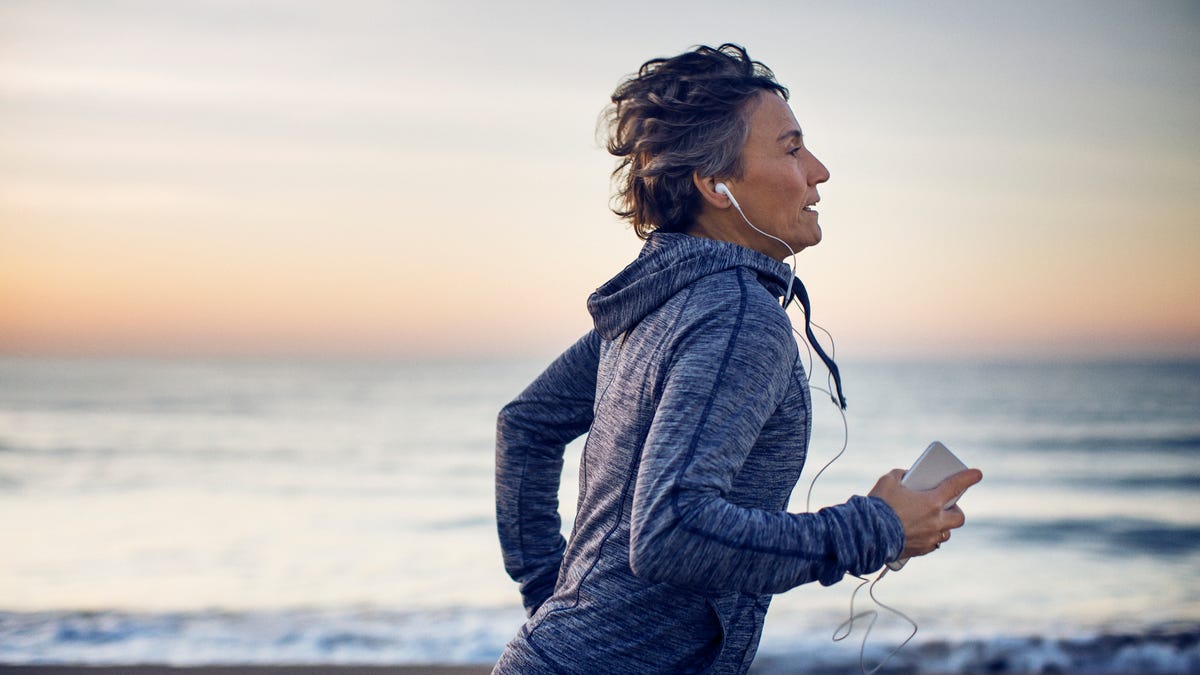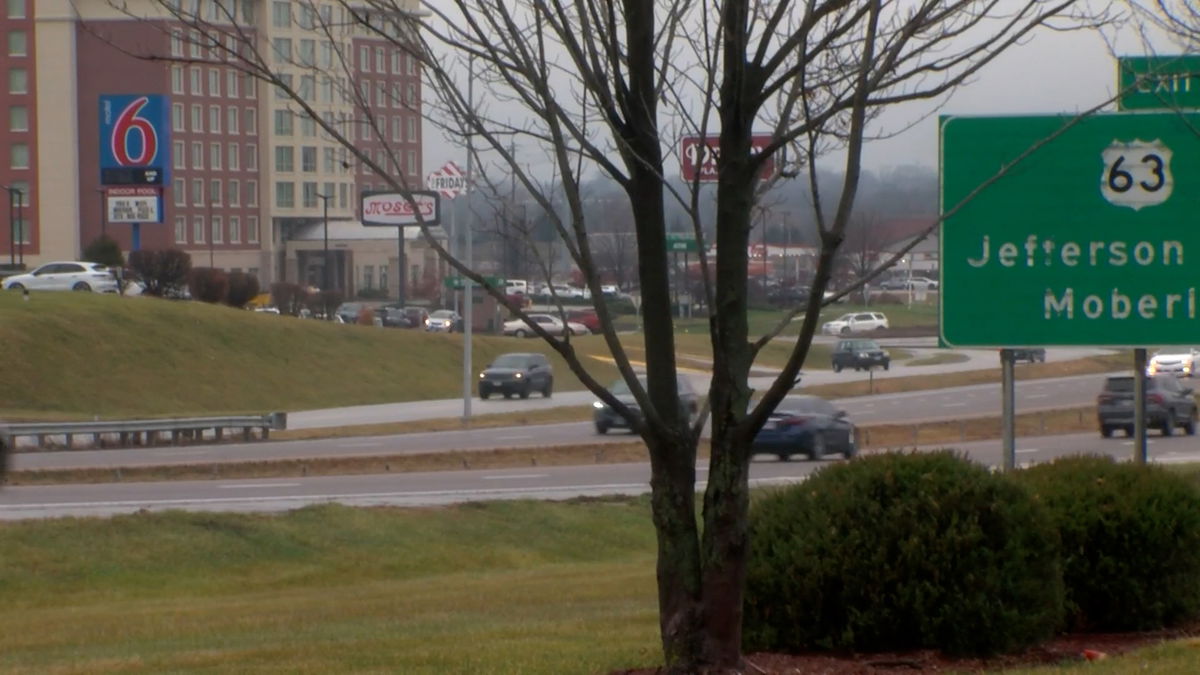Fashion
Moncler Invited 8,000 People to Party With A$AP Rocky and Rihanna in Shanghai

Photo: Courtesy of Moncler
Moncler’s labyrinth, built in an old Shanghai shipyard near the Huangpu River, had no dark corners, monsters, or Minotaurs like in the ancient Greek myth of yore. Rather, its winding roads were filled with neon blinking lights, its nooks were populated with food stands serving miniature steamed buns and coconuts with straws, and instead of Theseus, Rihanna was our hero. In Moncler’s so-called City of Genius, there is only revelry to be had, and from my vantage point, the brand’s 8,000 or so guests that populated this man-made 320,000-square-foot town for a night did just that.
Moncler’s event, which closed out Shanghai Fashion Week, was a behemoth that transcended the typical constraints and likely budget of a standard fashion event. Since 2018, the brand’s CEO, Remo Ruffini, has invited designers to collaborate with Moncler through its Genius program, hosting Richard Quinn, Pierpaolo Piccioli, Liya Kebede, and Simone Rocha in the past. Last year, Ruffini opened the program up to creatives beyond the fashion industry, which is how, at this Shanghai showcase, a powerhouse group of ten guest designers came together: Edward Enninful, Hiroshi Fujiwara, Donald Glover, Lulu Li, Nigo, Palm Angels, A$AP Rocky, Willow Smith, and guest appearances from Rick Owens and Lucie and Luke Meier, co-creative directors at Jil Sander.
Clockwise from top left: Photo: Courtesy of MonclerPhoto: Courtesy of MonclerPhoto: Courtesy of MonclerPhoto: Courtesy of Moncler
From top: Photo: Courtesy of MonclerPhoto: Courtesy of MonclerPhoto: Courtesy of MonclerPhoto: Courtesy of Moncler
During a press conference in Shanghai, Ruffini said he envisioned an apartment building with some of its lights on, populated by “geniuses” in each window (one would have to look no further than the Genius logo to understand what he means), and he wanted to bring the ethos of this imaginary world to life. “It’s important for us to talk with the world, with all of our communities,” Ruffini said. “When you see a place full of energy, it says something interesting to the world.”
The energy was certainly not lacking at the brand’s Saturday event. Each of these designers was given free rein (music to any artist’s ears) to build a tiny world, or neighborhood, if you will, of their own in Moncler’s city. Enninful’s vision was brought to life via a trek through the elements: Models posed in thick coats and languished in a sandstorm, windstorm, and snowstorm, the latter of which featured a desk with several publications he’s worked at — The Face, i-D, British Vogue — and a framed photo of his beloved Boston terrier, Ru.
In Fujiwara’s “city,” a collaboration with the sculptor Richard Wilson, there were pools of reflective thick black liquid, which a staffer on-site mentioned had ink in them, that mirrored the floating coats dangling above and played into “the theme of still waters running deep.” Even though signs outside the exhibit explicitly told guests to not touch the reflections, several did. “As we navigate through our routines, we encounter a variety of stimuli that influence our creative process,” Fujiwara told the Cut. His collection was inspired in part by his day-to-day life. “In today’s world, where information is so readily accessible, we are constantly absorbing new ideas and inspirations. Each piece in the collection is a reflection of moments, reinterpreted through my lens.”
In Glover’s corner, an orange grove (there had to be some play on words between Glover and grove that wasn’t utilized) filled the area with lush green grounds and an aromatic scent, taking inspiration from the multi-hyphenate’s farm in Ojai. Across the way, Willow Smith tapped into nature as well. She utilized a little wordplay herself, filling her space with overgrown plants in a postapocalyptic garden and one very large willow tree that swayed gently in the chilled breeze. It was her take on a future in which humans and nature can coexist, her collection filled with exclusively black and white pieces made with circular, natural motifs: formfitting dresses and bulbous, puffy leg warmers.
Nigo and Palm Angels both leaned into the nostalgia and fun of cars, with the former utilizing a ’90s Mercedes-Benz G-Class and reimagining it with a puffy, cushioned shell. The latter built a miniature race course complete with actual drivers, made up of select guests wearing their metallic and primary-colored collection, speeding alongside one another in go-karts. I was desperate to get behind the wheel of one, but to no avail. Lulu Li, notably the only Chinese artist to create clothing in this iteration of Genius, opted for a house of mirrors to showcase her AI-driven designs.
Rick Owens, who is more popular and famous in China than even I could imagine (I saw Owens moving through the crowd at the event and thought it was Rihanna, who was also in attendance, because the swarm of people undulating around and following him was so massive), went full architect mode. Owens built a steel pod in a foggy room and dubbed the mountain “Refuge,” in which puffer-clad models walked around and whose insides revealed soft places to rest and sleep. For those desperate to re-create some version of a lunar landing in the safety of their home, fret not; the pod is for sale.
Clockwise from top left: Photo: Courtesy of MonclerPhoto: Courtesy of MonclerPhoto: Courtesy of MonclerPhoto: Courtesy of Moncler
From top: Photo: Courtesy of MonclerPhoto: Courtesy of MonclerPhoto: Courtesy of MonclerPhoto: Courtesy of Moncler
For me, one of the standout exhibits was that of Jil Sander. In the Meiers’ corner, a white bubble was erected, its floors painted a buttery, pale yellow and the round screen encapsulating the room in the faintest of blues. With my massive coconut drink in hand (which I became emotionally attached to, my own Moncler-stamped version of Castaway’s Wilson), I felt a bit like I’d died and crossed over to the other side; it was either a subdued and peaceful version of heaven or an incredibly pleasant purgatory. Here, runway shows were staged every 30 minutes during the four-hour event, featuring some of the most gorgeous knitwear I’ve seen to date: soft, floor-skimming shawls in pinks, reds, and grays; round, three-dimensional skirts dotted with tiny feather-esque paper balls that shivered with each step; and chunky boots so chic I wouldn’t mind hiking in them myself. Backstage, when asked why the designers staged a fashion show at the fashion event (shocking!), the Meiers said the catwalk was essentially their “expertise.” “When everything comes together properly, the music, the casting, the collection, we’re fans of that perfect moment,” Luke said. Lucie added, “We also love to see our clothes alive.”
A$AP Rocky’s neck of the woods proved to be a crowd favorite and a personal favorite of mine. Inside, a futuristic space exploration was afoot, with a silver, metallic conversation pit framing the whole thing as scenes of real and AI-generated mountains passed by. At some point, Rihanna took her spot in one of these silvery seats to support her partner, much to the excitement of the fans around them. Models stood around the perimeter in coats and vests that melded into an alpine-meets-moto aesthetic. The music blasting into the place, I was told by a Moncler executive, were released and unreleased songs by the rapper intermixed with traditional Chinese music. The centerpiece of the exhibit was a new console A$AP Rocky had designed himself with 14 different functions, including recording music, watching DVDs and VHS, and listening to tapes and records. The console also included a coffee maker, an ashtray, and, perhaps most importantly, a cereal dispenser filled with Lucky Charms that I bravely refrained from eating. At the time, the nostalgia-inducing machine, which I was told would be for sale for a cool $100,000, had no name. But a kind executive shot a text to quench my nosy pursuit, and it turns out the pod had been christened with a name after all: the Cabinet. Straightforward!
Performances by Chen Lijun and Henry Lau closed out the night, the latter of whom played the piano, the cello, a bottle (yes, a literal bottle), and a violin and has me now looking for “I the event to be at. Although I’m sure Moncler paid a hefty price tag, hey, at least I got to see Rihanna.









